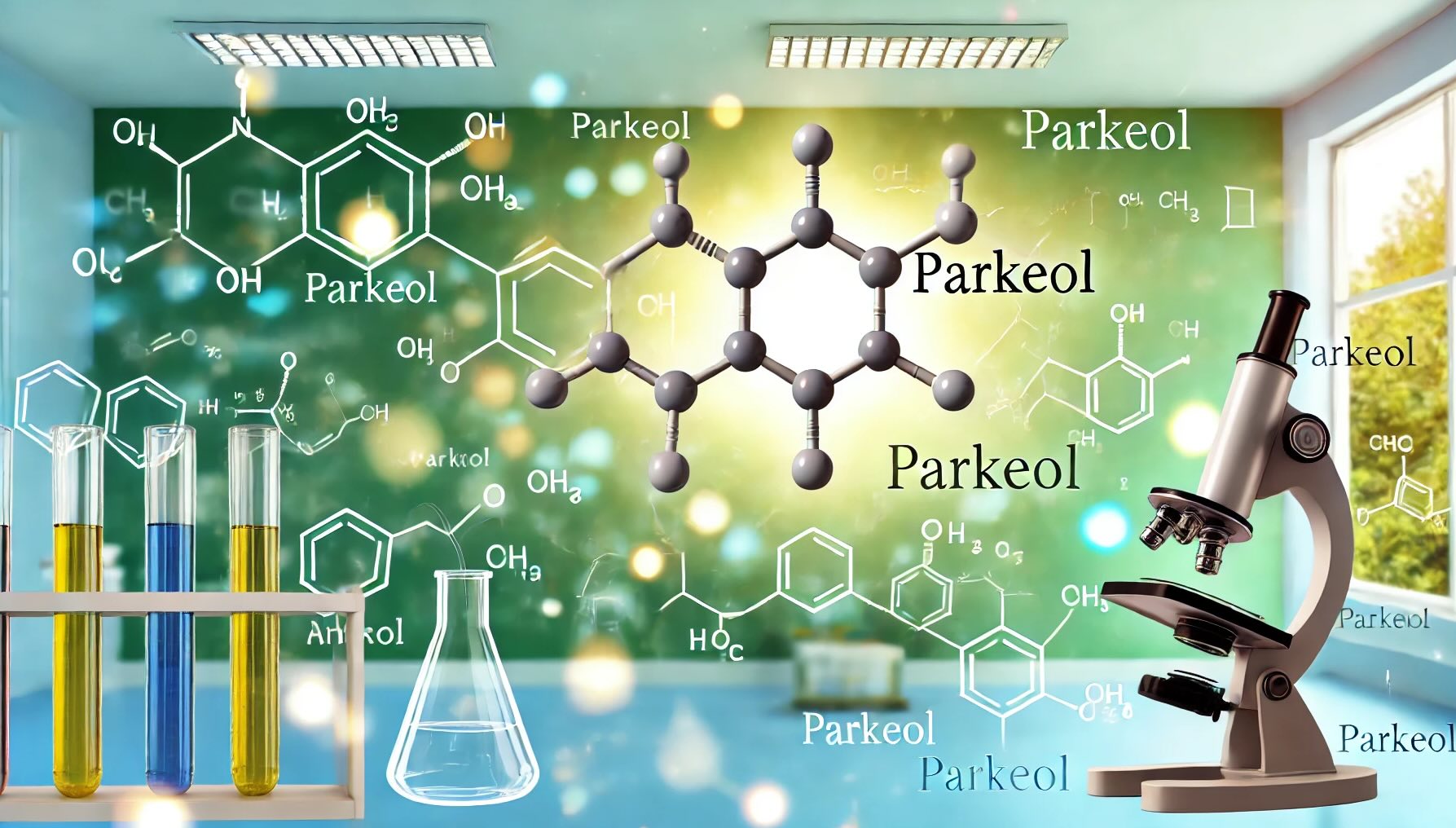
What is Parkeol? Parkeol is a unique triterpenoid alcohol found in various plants, fungi, and algae. This compound plays a significant role in the biosynthesis of sterols, which are essential for cell membrane structure and function. Why is Parkeol important? It helps in maintaining the integrity and fluidity of cell membranes, making it crucial for the survival and growth of many organisms. Where can you find Parkeol? It's commonly found in certain medicinal plants and fungi, often used in traditional medicine for its potential health benefits. How does Parkeol benefit humans? Research suggests it may have anti-inflammatory, antioxidant, and antimicrobial properties, making it a subject of interest for developing new therapeutic agents. Curious to learn more? Keep reading to uncover 25 fascinating facts about this intriguing compound!
Key Takeaways:
- Parkeol, found in plants and fungi, protects cells, has medicinal potential, and may be used in skincare and agriculture. It's a fascinating compound with diverse applications!
- Scientists are uncovering the secrets of parkeol's structure, properties, and biological functions, paving the way for potential pharmaceutical and ecological discoveries. Exciting times for this unique compound!
What is Parkeol?
Parkeol is a unique triterpenoid alcohol found in various plants and fungi. It plays a significant role in the biological processes of these organisms. Let's dive into some fascinating facts about this intriguing compound.
Origins of Parkeol
Understanding where parkeol comes from helps appreciate its importance.
- Parkeol is primarily found in the bark of certain trees. This compound is named after the Parkia species, where it was first discovered.
- It is also present in some fungi. Certain fungi produce parkeol as part of their metabolic processes.
- Parkeol is a triterpenoid alcohol. Triterpenoids are a class of chemical compounds composed of three terpene units, making them large and complex molecules.
- It was first isolated in the 1960s. Researchers identified parkeol while studying the chemical composition of tree bark.
Chemical Structure and Properties
The structure and properties of parkeol make it a subject of interest for scientists.
- Parkeol has a molecular formula of C30H50O. This indicates it contains 30 carbon atoms, 50 hydrogen atoms, and one oxygen atom.
- It has a complex ring structure. The molecule consists of multiple interconnected rings, characteristic of triterpenoids.
- Parkeol is hydrophobic. This means it does not dissolve well in water but is soluble in organic solvents.
- It has a high melting point. Parkeol melts at a temperature above 200°C, indicating strong intermolecular forces.
Biological Functions
Parkeol plays several roles in the organisms that produce it.
- It acts as a protective agent. In plants, parkeol helps protect against herbivores and pathogens.
- Parkeol contributes to the structural integrity of cell membranes. It helps stabilize the membranes, making them more resilient.
- It has antioxidant properties. Parkeol can neutralize free radicals, protecting cells from oxidative damage.
- It may have anti-inflammatory effects. Some studies suggest parkeol can reduce inflammation in biological tissues.
Uses and Applications
Beyond its natural roles, parkeol has potential applications in various fields.
- Parkeol is used in traditional medicine. Some cultures use parkeol-containing plants for their medicinal properties.
- It is being studied for its potential in pharmaceuticals. Researchers are exploring parkeol's potential as a therapeutic agent.
- Parkeol could be used in cosmetics. Its antioxidant properties make it a candidate for skincare products.
- It may have agricultural applications. Parkeol could be used to develop natural pesticides or plant protectants.
Research and Discoveries
Ongoing research continues to uncover new aspects of parkeol.
- Scientists are studying its biosynthesis. Understanding how parkeol is produced in nature could lead to new biotechnological applications.
- Research is exploring its ecological roles. Studies are investigating how parkeol affects interactions between plants, fungi, and their environments.
- Parkeol's potential health benefits are under investigation. Researchers are examining its effects on human health and disease.
- New sources of parkeol are being discovered. Scientists are identifying additional plants and fungi that produce this compound.
Interesting Facts
Here are some additional intriguing tidbits about parkeol.
- Parkeol is part of the sterol family. Sterols are essential components of cell membranes in plants and fungi.
- It has a distinctive odor. Parkeol contributes to the characteristic smell of some tree barks.
- Parkeol can be synthesized in the lab. Chemists have developed methods to produce parkeol artificially.
- It is a subject of ecological studies. Researchers are exploring how parkeol influences plant and fungal communities.
- Parkeol's structure is similar to other important biomolecules. Its similarity to cholesterol and other sterols makes it an interesting subject for comparative studies.
Final Thoughts on Parkeol
Parkeol, a fascinating compound found in certain plants, has piqued the interest of scientists and nature enthusiasts alike. Its unique properties and potential health benefits make it a subject worth exploring further. From its role in plant defense to its possible applications in medicine, parkeol holds promise for future research and innovation. Understanding this compound better could lead to new discoveries in both natural and medical sciences. Keep an eye on ongoing studies, as they may reveal even more intriguing aspects of parkeol and its uses. Whether you're a student, researcher, or just curious about the natural world, parkeol offers a glimpse into the complex and wondrous chemistry of plants. Stay curious and keep learning about the amazing compounds that nature has to offer.
Frequently Asked Questions
Was this page helpful?
Our commitment to delivering trustworthy and engaging content is at the heart of what we do. Each fact on our site is contributed by real users like you, bringing a wealth of diverse insights and information. To ensure the highest standards of accuracy and reliability, our dedicated editors meticulously review each submission. This process guarantees that the facts we share are not only fascinating but also credible. Trust in our commitment to quality and authenticity as you explore and learn with us.
